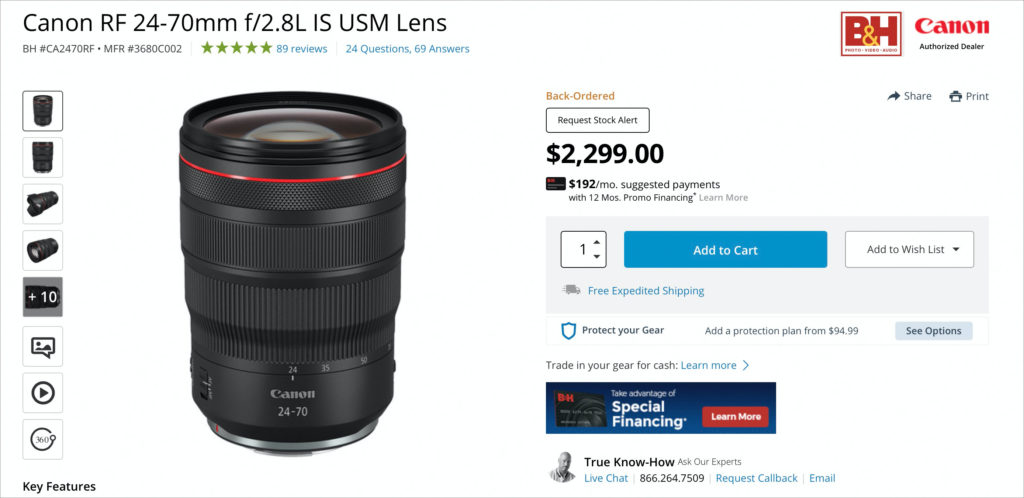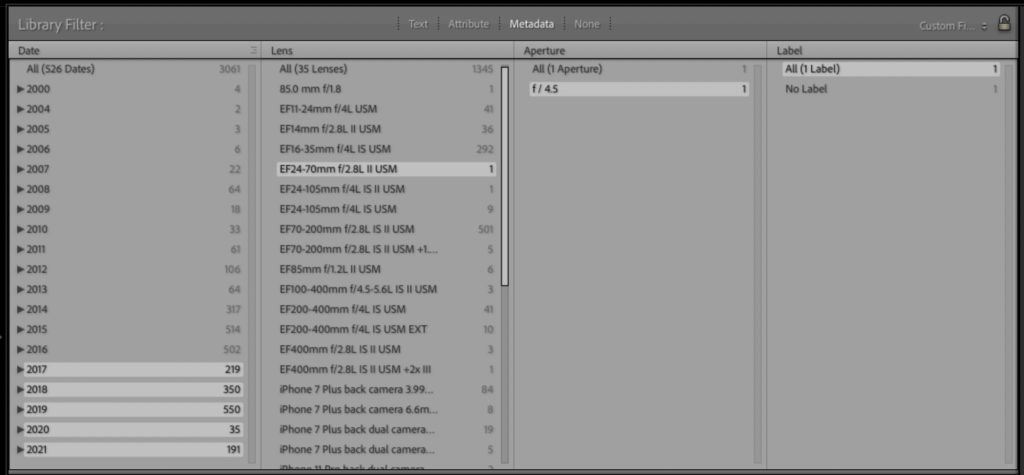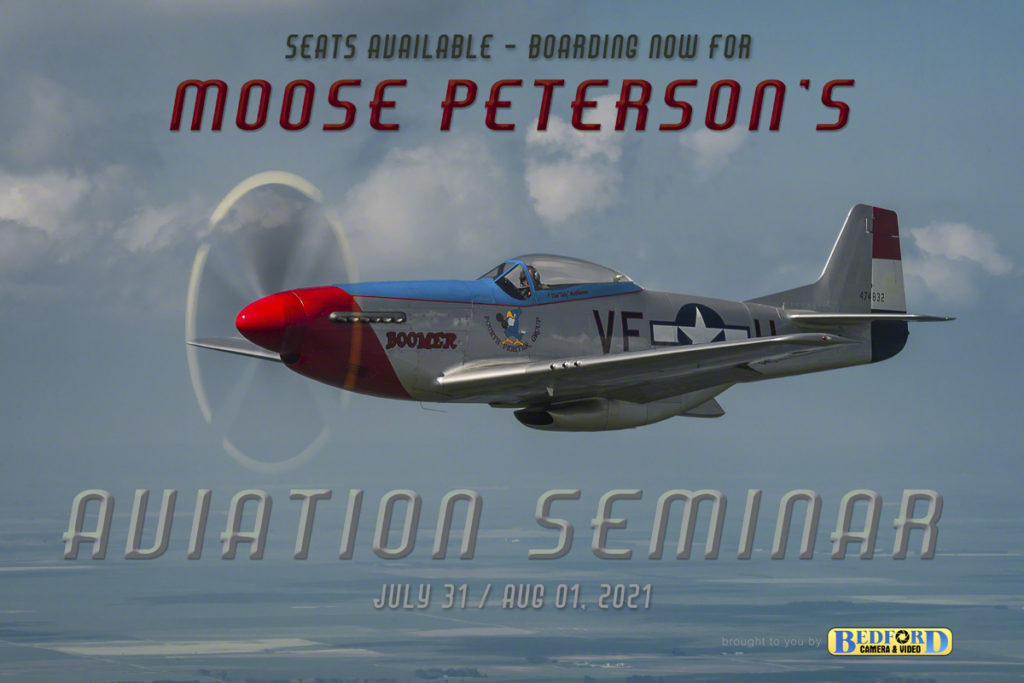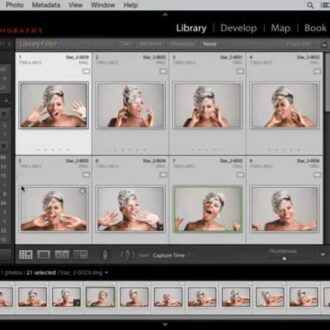Thinking of Buying an Expensive f/2.8 lens? Lightroom Can Help
Well, it can help you with making your buying decision, anyway, and when it comes to lenses, I don’t think they’ve ever been more expensive than they are today. About the only thing more expensive is ink for your printer (my buddy always says, “How is it that home printer ink costs way more than a barrel of crude oil? What’s in that ink? Gold flakes?” But I digress.
Anyway, right now a lot of folks are buying lenses for their new mirrorless bodies, maybe replacing the lenses they had for their DSLR. For example, I have a Canon 24-70mm f/2.8 but for my DSLR, not a native mount for my mirrorless body, and B&H has them (but right now they’re backordered, which really doesn’t help this story, but stay with me).

Like all lenses these days, it’s not cheap at $2,300. The question is: Will I use it? Well, how much did I really use the old one (and what f/stops did I shoot it at? Maybe I don’t need an f/2.8 at all — maybe an f/4 would work just as well and it’s 1/2 the weight and 1/2 the price). These are both situations where Lightroom can help.

Here’s what to do: Go to the Library module and hit the backsplash key to bring up the Library module filters (seen above). Click on the Metadata tab up top and four columns will appear. Make sure the first column is set to Date (click and hold on the name of the first column at the top left of the column and a pop-up menu of choices will appear). Set the 2nd column to Lens. Set the third column to Aperture (as shown here).
Now, in the first column on the left, hold the Shift key and click on the last five years (as I’ve done here) to select all the photos from the past five years. Now, in the lens column, find your old 24-70mm in the list, click on it and to the right of it, it will show you how many shots you’ve taken (or at least, you’ve kept) with that exact lens in the past five years (in my case, it was 1 single photo. Obviously, I took more, but I only kept one). Now, look in the third column — I didn’t even take that one keeper at f/2.8. I took it at f/4.5.
Conclusion
Not only do I not need to buy the f/2.8 version of that lens — and not only do I not need to buy the f/4 lens in the first place, I need to SELL my existing 24-70mm f/2.8 lens, because for the past five years I’ve been barely using it, and when I did, I didn’t even shoot it at f/2.8. This is the kind of stuff Lightroom can tell you, instantly, and it could save you thousands when it comes time to get some new glass. Hope you found that helpful.
Incredible Aviation Photography Opportunity with Moose Peterson

Can you imagine spending a couple of days with the man who literally wrote the book on aviation photography at a live seminar? If you’re into aviation photography, this is just an incredible opportunity to learn from the very best. More details and tickets right here.
Revelation of the Month
This has nothing to do with Lightroom or photography, but I believe that Tater Tots are such an incredibly perfect food that they were probably brought here by aliens in an act of benevolence to help further mankind. Who’s with me here?
Hope you all have a fantastic weekend, and we’ll catch you back here on Monday. Cheers. 🙂
-Scott
P.S. We have officially announced the “Photoshop World Conference” is back — three days, all online, with your favorite Photoshop World instructors. More details over on my blog today, or over at photoshopworld.com. It’s August 30-Sept 2nd, 2021. And yes, there’s a full Lightroom track throughout! Awwww, yeah! 🙂


Bought the R and then the R5 when it was released. Used the adaptor for my bakers dozen EF lenses. But lately wanted to try an RF lens and this is the very technique I used to decide which. My 70-200 2.8 was number one and two lenses were very close together in 2nd and 3rd, my 70-200 4 and my 24mm TS. Since they’re not releasing a new R TS lens any time soon I ended up with the 70-200 2.8 and love it. A perfect way to get the right lens and not spend money on one I would use less.
I wanted to buy a fast-ish prime lens, so I looked at my LR stats, and found that 35 mm was the most common focal length I shot at, so I got the RF 35mm F1.8 prime for my new Canon EOS R. I love that lens. Small for when I want the camera to be inconspicuous, great lens, focal length very useful for me.
I think I read something previously that you had written about accessing these stats, which is how I found them.
Thanks!
Backsplash – I love it… but I think you meant “backslash”.
This is a great tutorial on using Lightroom to uncover some interesting statistics on how we use our lenses. I checked the last 5 years’ usage for my 17-55mm f/2.8 IS lens and I found that I shoot at f/8.0 about 40% of the time, f/2.8 only 7% of the time, and f/6.3 16% of the time. I don’t think I need a faster lens than that!
Interest observation. I checked my stats and found that 65% of my photos shot with my 70-200 f/4 on my Nikon Z6 were shot at f/4. Another almost 20% were at f/4.5 or f/5. (I shoot a lot of sport, particularly baseball). So while I’m still in the market for the f/2.8, this exercise affirmed what I was feeling. I’ve long felt that I just wasn’t getting enough bokah with the f/4, given the distances I am from the action, but the stats show I’m at least trying to get it stopped down.
Hi, Mike: I think just looking at these stats is fascinating – thank you for sharing how you used it. 🙂
So are you proposing that there is no benefit to shooting at f4.5 on an f2.8 lens compared to wide open on an f4.5 lens?
No, I’m teaching a Lightroom technique. Oy.
Sorry Scott, but the title of your article and the fact that you don’t mention that 24-70mm f2.8 lenses (by Canon, Nikon, Sony, Carl-Zeiss…) are of much higher quality (glass, chromatic aberration, sharpness, speed, materials, build…) than their cheaper siblings definitely could make some people with less experience in what makes a great lens great, take the wrong decision. Years ago, when I started to dedicate myself to fine art photography with a close-to-zilch budget, I bought a plethora of cheaper lenses, only realising afterwards that the money buying me six lenses that weren’t sharp enough, had horrible chromatic aberrations, were terribly slow when autofocusing, and had no decent coated glass inside them, could well have sufficed to get me two great and virtually perfect f2.8 lenses (24-70 and 70-200mm). I actually lost a lot of money buying all the cheap glass, having to sell it for peanuts only a couple of years later to help me buy what I should have bought in the first place: f2.8 lenses. Even if they are (almost) never used at f2.8, their “soft spot” is at a far larger opening than any 4.5 or 5.6 zoom lens out there. Numbers don’t always tell the truth… not even in Lightroom.
Nice pointer. I went through a similar exercise with a camera body. I go on safari every few years and when I do I like to have a fast, crop sensor body like the Canon 7D series. But when I got back from my last safari, I looked up how many shots I took with my old 7D outside of the wildlife trips and it was almost none. So I sold off that body figuring I could re-buy it or something similar the NEXT time I needed it
Hi, Eric: That’s a prefect way to use it!!! Thanks for sharing that (I wish I had that example when I was writing this). 🙂